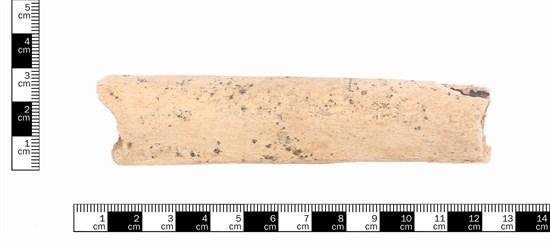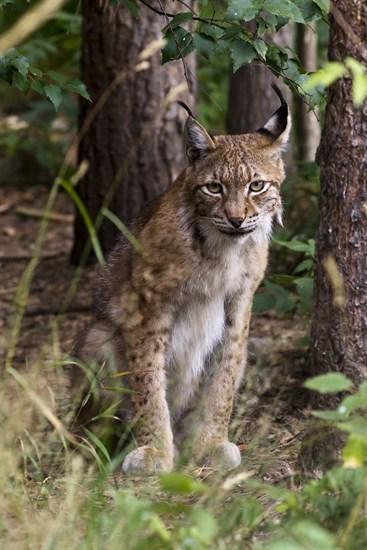Oldest Northerner
Oldest Northerner
Analysis of bones from a cave in Southern Cumbria has found the earliest human bones known from Northern Britain. Kents Bank Cave, on the north side of Morecambe Bay, was excavated in the early 1990s and 2001 by Chris Salisbury and a team of local archaeologists. Many of the bones found in the dig are now at the Dock Museum. Scientists from Liverpool John Moores University investigated the collection. This study included a fragment of human leg bone radiocarbon dated to just over 10,000 years old. This is the earliest known human bone from northern Britain, following the retreat of the polar conditions of the last Ice Age.
Archaeologist Ian Smith explained why the find is of archaeological interest: "Previous cave burials of humans from around this date have been in southern England, with later dates further north. However, the date of this human femur is contemporary with the earliest postglacial human bones from caves in the south suggesting similar ritual behaviour in both Cumbrian and Somerset caves at the same time.”

Early Humans In Cumbria
Early hunters and gatherers came to Cumbria about 12,000 years ago. Caves were used over thousands of years. The environment changed enormously from 10,000 BC onwards. The ice retreated, it became warmer and Cumbria became heavily wooded.
The finds from Kents Bank cave were scientifically investigated by PhD student Ian Smith - a summary of the results have been published in the Journal of Quaternary Science.
Dr Hannah O’Regan, a specialist in cave archaeology at the University of Nottingham, and the other author of this research said: "Ian’s work on the bones from Kents Bank show just how important cave archaeology and museum collections can be. Caves can preserve bones which would have decayed elsewhere, and once the material is excavated museums keep them for future study. Without this, we wouldn’t have known about our earliest northerner!”
Cave Finds
The Kents Bank cave wasn't just used by humans it was also used by animals. Some show evidence of cut marks showing they were eaten or chewed (by other animals) but some would have died naturally in the cave.
A previously unidentified lynx jaw bone (see left and image of lynx right) was highlighted by the researchers of the cave assemblage. This exciting find is on display in the Dock Museum's archaeology gallery: Stone Axe, Blood Axe, Conquest. Lynx became extinct in the UK about 1800 years ago, probably due to a changing environment and hunting.
The study also dated bones of elk (a large deer species no longer found in Britain) and horse, showing that they came from a ‘warm snap’ at the end of the last Ice Age, between 12 and 13 thousand years ago. We know that humans were in southern Cumbria at this time as their stone tools have been found, but as yet no human bones have been dated to this time. Clearly horse and elk would have been good prey for these human hunters, but there is no direct evidence on the Kents Bank bones to suggest that they were killed by people.
Dr Dave Wilkinson, an ecologist at LJMU, and one of the authors of this study, commented: "The horse bones are particularly interesting as there has been a lot of uncertainty surrounding the occurrence of horse in this period. Both horse and elk later became extinct in Britain, with people later reintroducing horse to this country.”
The elk bone also produced evidence of another animal, as the bones had been chewed by either a wolf or large dog.

